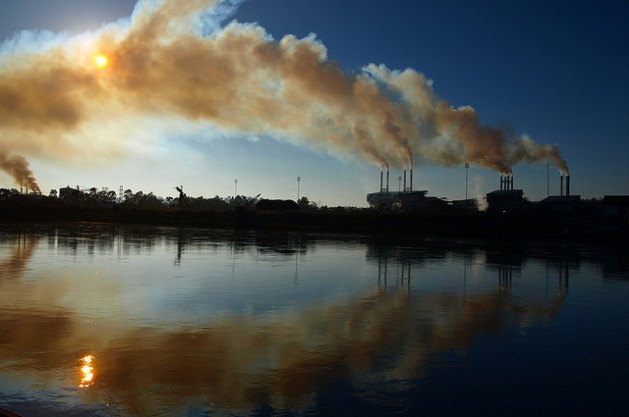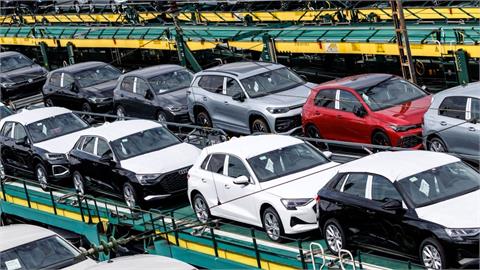With renewable electricity costs going through the floor, the EU should increase its 2030 targets and aim for close to zero carbon electricity by 2040. But while power decarbonisation is crucially important, it will not be sufficient to deliver a truly zero carbon economy, writes Adair Turner*
With renewable electricity costs going through the floor, the EU should increase its 2030 targets and aim for close to zero carbon electricity by 2040. But while power decarbonisation is crucially important, it will not be sufficient to deliver a truly zero carbon economy, writes Adair Turner*.
Europe aspires to lead the way in addressing the climate change challenge. The EU plans to cut emissions 80% below 1990 levels by 2050: Germany has set a higher 80-95% target. But with EU emissions in 2015 only 22% below 1990 levels, and Germany’s only 27%, the facts belie the aspiration.
This is despite the fact that renewable electricity costs are now far lower than most commentators dared dream only 10 years ago. Since 2008, wind power costs have fallen about 70%, solar power over 80%, and battery costs have similarly reduced. In highly favoured geographies such as northern Chile, western China, or parts of Mexico, stunningly low solar prices, now nudging below two cents per kilowatt hour, are being achieved. In less sunny northern Europe, costs will always be higher, but analysis by the Energy Transitions Commissionshows that by the mid-2030s power systems which are 90% or more dependent on intermittent renewables could deliver electricity at a price below today’s cost of fossil fuel generation.
Since the economic facts have changed, so too should Europe’s targets. The EU should now increase its 2030 renewable electricity target from today’s 50%, and aim for close to zero carbon electricity by 2040. In addition it should aim for rapid electrification of those economic activities – in particular building heating and light duty transport – where the technical feasibility is clear and the economics increasingly attractive.
But while power decarbonisation is crucially important, it will not be sufficient to achieve Europe’s 2050 aspiration, let alone to deliver a truly zero carbon economy. By 2040 indeed, in Europe and across the world, over 60% of declining total emissions could come either from heavy industries such as steel, cement and chemicals, or from trucking, shipping and aviation, all sectors where electrification is less certainly feasible or likely to be more costly.
Europe’s current plans say relatively little about how to decarbonise these sectors. So too indeed, do almost all the national plans – the "nationally determined contributions” – which countries from across the world have submitted under the Paris Agreement. Plans for renewable electricity decarbonisation are often insufficiently ambitious, but at least they are usually clear: plans for other sectors are typically too fuzzy to provide any certainty about how, and how rapidly, progress can be achieved.
In all of these "harder to abate” sectors there are technically feasible routes to decarbonisation. The future costs of truck electrification are uncertain, but the Tesla Semi launch suggests it is certainly a credible option. Hydrogen, whether used in fuel cells or internal combustion engines, is also a clear option for trucking and could play a major role in the decarbonisation of shipping. And as a recent report from the International Energy Agency makes clear, falling costs for both renewable electricity and electrolysis will make zero carbon hydrogen increasingly economic.
That in turn could allow decarbonised steel production, with hydrogen rather than coking coal used as the reduction agent: but it is also possible that continued coking coal use combined with carbon capture and storage (CCS) might prove more economic. Heat electrification could significantly reduce the carbon intensity of chemicals production.
Total decarbonisation is thus undoubtedly technically feasible, but achieving it will require much stronger policies than currently in place. Dramatically reduced renewable costs would not have been achieved without targets and initial subsidies which drove such large-scale investment and learning curve effects that the need for subsidies has now almost disappeared. Similarly strong policies are now required to drive down the costs of other technologies such as CCS. Falling renewable costs make it unlikely that CCS will be essential or economic in the power sector, but in sectors such as cement, it probably needs to play a crucial role.
The sheer multiplicity of technical options makes carbon pricing a vital policy tool. The EU Emissions Trading Scheme, introduced as a flagship climate change policy in 2006, has in fact played almost no role in driving renewables deployment and cost reduction, both because the carbon price has been too low to make a difference, and because other more direct policies (such as fixed price auctions) have proved more effective.
But as we turn to sectors where the optimal choice between alternative technological paths is unclear, we need a significant and rising carbon price to unleash a market driven search for lowest cost solutions. If the EU imposed a carbon price of €25 today, rising to €50 by 2030 and higher thereafter, it would dramatically increase the pace of decarbonisation in the "harder to abate” sectors.
Carbon pricing alone however cannot be sufficient. Nor indeed should we focus only on the decarbonisation of energy supply and materials production. Increased recycling and reuse is also essential and nowhere more so than in plastics. Today, plastics production and use are estimated to account for only 2% of total global emissions, but this share will increase dramatically as we achieve progress in decarbonising power. And whereas today plastics incineration produces no net emissions increase if it displaces fossil fuel use, it must be phased out to make zero carbon power attainable. Without changed practices and policies, plastics could account for 30% of total emissions by 2050.
End-of-life emissions from plastics must therefore be drastically reduced in a move to a more circular economy. That will require major changes in business practice in several industries which will not occur without a combination of carbon pricing, voluntary industry action, and robust regulation.
The good news is that Europe’s aspirations are undoubtedly technically feasible, increasingly affordable, and if rigorously pursued would create multiple opportunities for company competitive advantage and job creation. But targets for power decarbonisation should now be significantly increased: and clear plans, supported by robust policies, must be developed for the "harder to abate” sectors. Without those actions, the gap between noble aspiration and disappointingly slow progress will remain.
* Lord Adair Turner is Chair of the Energy Transitions Commission (ETC), whichbrings togethera diverse group of leaders to accelerate change towards a low-carbon energy system.




